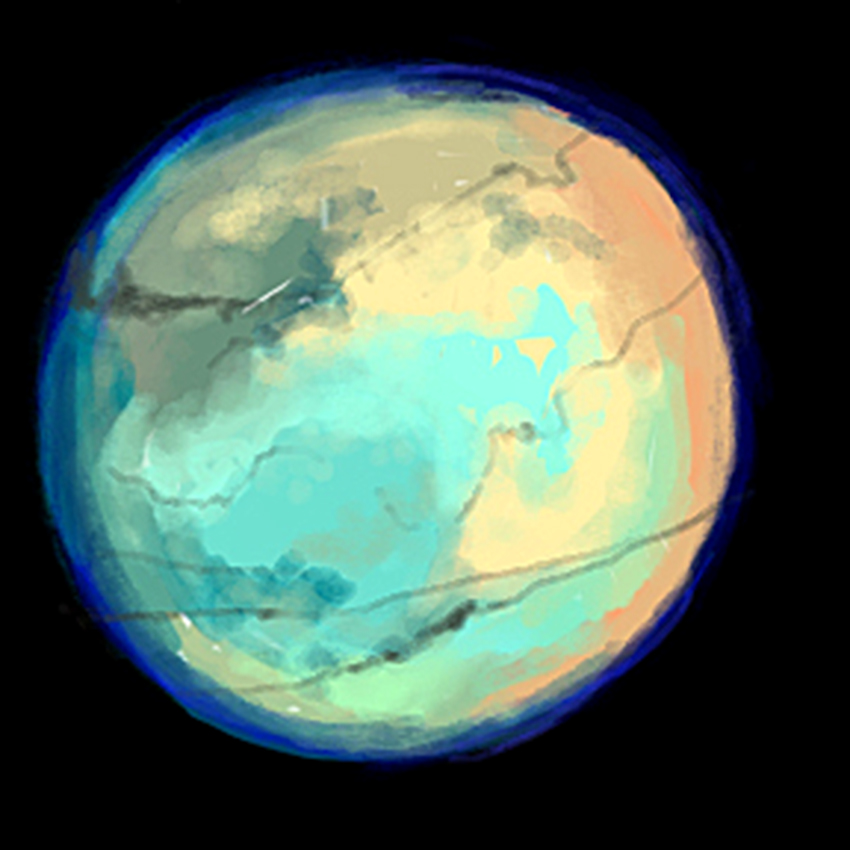Researchers at UT have found a series of methane-filled canyons spanning the northern pole of Titan, Saturn’s largest moon, which reach a depth of up to 2,000 feet.
The researchers hypothesize these canyons were formed as a complement to the vast methane seas that cover Titan’s northern pole, specifically the second largest sea, Ligeia Mare.
Titan’s weather system works in a similar way to Earth’s, with seasons and storms, except methane, instead of water, is the driving force. The surface of Titan is so cold that methane condenses into a liquid to form clouds and oceans.
Cyril Grima, a research associate at the University of Texas Institute for Geophysics, said the system of tributaries and channels surrounding Ligeia Mare are more familiar than one might think.
“It sometimes is very similar to the valleys we have on Earth, like the Nile in Egypt — you have this kind of delta river that feeds the sea,” said Grima, co-author of the research letter.
The team gathered all of this information from a 2013 flyby of Titan by the unmanned spacecraft Cassini, which has orbited Saturn since 2004. As Cassini passes by Titan, it sends radiowaves down to the surface and measures how long it takes for them to bounce back, outlining the shape of the terrain.
“We had seen in some data that these seas were fed by what looked like rivers, but we weren’t sure that those rivers were actually active,” Grima said. “This is the first time that we proved the rivers on Titan can be filled with liquid.”
According to the research letter, the canyons are narrow and deep inlets that run into the northern seas, similar to Earth’s fjords. Unlike these fjords, however, these canyons couldn’t have been made by moving glaciers.
Instead, the researchers proposed that the canyons were created either by tectonic uplift or because in the past the seas were lower than their banks, and over time erosion caused rifts in the surrounding landscape.
“If you have highlands, you can form a stream toward the sea and that kind of force can carve out a canyon,” Grima said.
Cassini’s mission is almost over. The spacecraft will make its way closer and closer to Saturn over the next year, taking measurements until it is destroyed in Saturn’s atmosphere.
Scott Edgington, Cassini deputy project scientist at NASA’s Jet Propulsion Laboratory, said Titan has the same molecular building blocks that formed life on Earth.
“You can think of Titan as L.A. on a really smoggy day,” Edgington said. “What you find in the atmosphere over L.A., you’re probably going to find over Titan — those are the right chemicals you need to start the process to form life.”
Edgington said projects like Cassini are important for exploring the planets and moons that could harbor life.
“With spacecraft like Cassini, we’ve definitely opened the door to visit planets other than Mars,” Edgington said.
Marco Mastrogiuseppe, paper co-author and research associate at Cornell University, said continued research on Titan will require funding from the U.S. and Italian space agencies.
“Although we have a huge amount of data from Cassini which deserves still many years of analysis and interpretation, the amount of time that I will spend to analyze it will mainly depend on the available funding that I will be able to access,” Mastrogiuseppe said in an email.
Grima said the scientific community would also benefit from a new mission to Saturn, because modern sensors could help scientists learn more about Titan and, by extension, Earth.
“Titan is very similar to an early Earth,” Grima said. “The atmosphere and molecules you have [on Titan] are very similar to Earth and can help understand better our world itself.”















